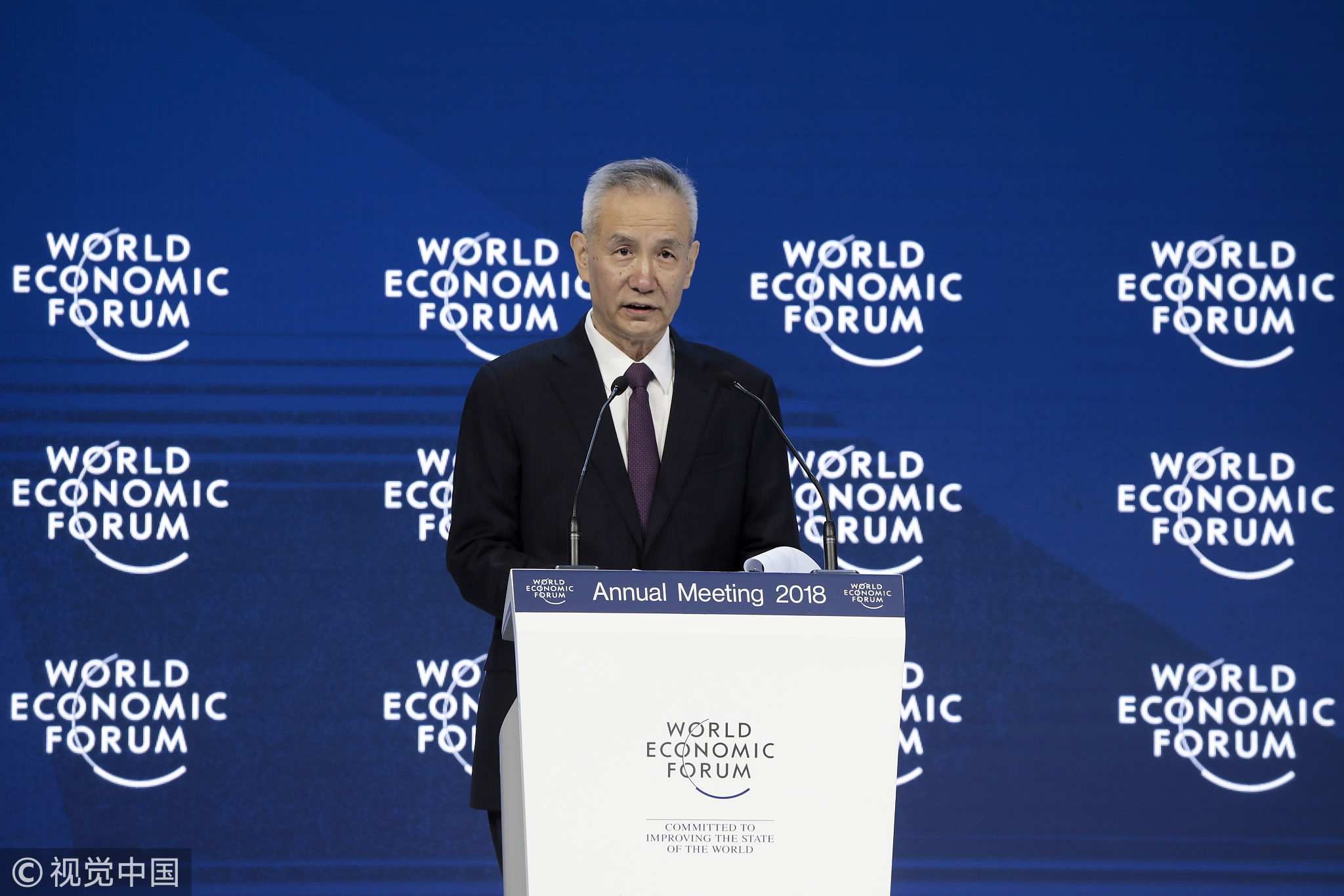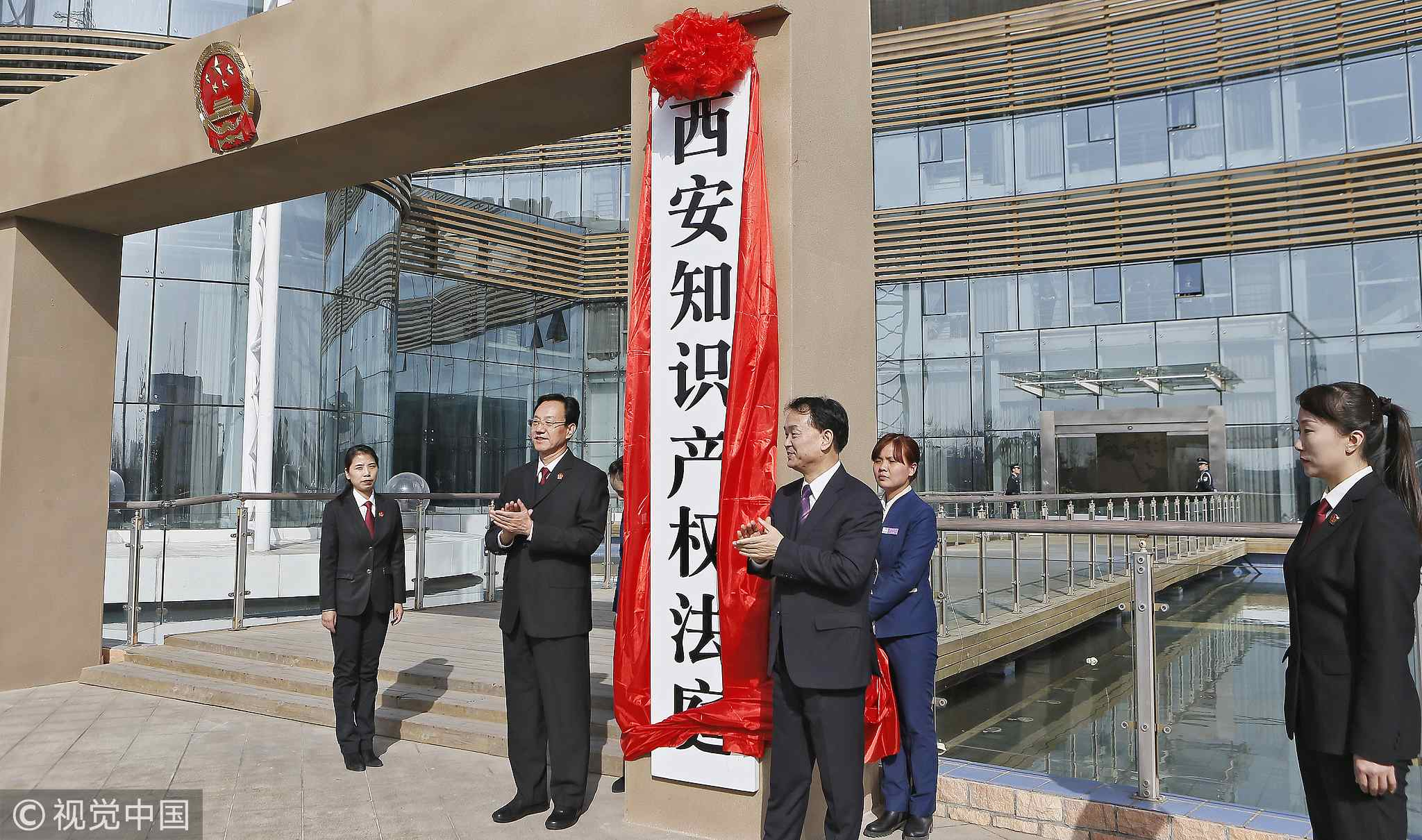
Opinion
08:48, 02-Feb-2019
China-U.S. trade talks look set to turn a crisis into an opportunity
China Plus

Editor's note: This article is an edited translation of a commentary from the Chinese-language "Commentaries on International Affairs" published by China Plus on February 1, 2019.
Two days of high-level economic and trade talks between China and the United States ended in Washington on Thursday.
During the talks, the two sides discussed thorny issues such as the balance of trade, technology transfers, intellectual property protections and non-tariff barriers. The chief negotiators had candid and constructive discussions and made important progress, including agreeing on the timetable and road map for the next stage of the talks.

Chinese Vice Premier Liu He speaks during a special session on day 2 of the World Economic Forum in Davos, Switzerland, January 24, 2018. /VCG Photo
Chinese Vice Premier Liu He speaks during a special session on day 2 of the World Economic Forum in Davos, Switzerland, January 24, 2018. /VCG Photo
After the talks, U.S. President Donald Trump met with Chinese Vice Premier Liu He, China's lead negotiator, saying that an American delegation headed by Trade Representative Robert Lighthizer and Treasury Secretary Steven Mnuchin would travel to Beijing for a new round of high-level talks after the Chinese New Year holiday. These talks will lay the groundwork for a meeting between the presidents of the two countries.
The positive direction of the latest round of discussions signals that the United States is keen for the talks to get results. It also reflects China's approach of trying to find a way to turn a potential crisis into a valuable opportunity.
When it joined the World Trade Organization in 2001, many of China's companies faced direct international competition for the first time. Some business people here panicked, seeing domestic enterprises as sheep confronted with the sight of wolves baying at the farm gate. But 17 years later, many domestic firms have flourished, and their international competitiveness has markedly improved.
According to the consensus reached during the trade talks, China will actively work to expand agricultural, energy, manufacturing and services imports from the United States.
This will benefit American businesses and at the same time offer people in China new opportunities to upgrade their consumption. As for the American request that China carry out structural reforms, these can be carefully considered in light of China's national interests.
For example, the United States has asked China to increase protection of intellectual property rights and to expand market access. China has already taken steps in this direction, as demonstrated by the proposal currently being considered that would see a system of punitive damages incorporated into national Patent Law.

The inaugural ceremony of Xi'an Intellectual Property Rights Tribunal in Xi'an City, northwest China's Shaanxi Province, February 24, 2018. /VCG Photo
The inaugural ceremony of Xi'an Intellectual Property Rights Tribunal in Xi'an City, northwest China's Shaanxi Province, February 24, 2018. /VCG Photo
Regardless of whether trade frictions between the two economic powers continue, China will stay along the road towards further reform and opening up. It's undeniable that these trade frictions are putting downward pressure on China's economy.
But China is determined to ensure that, in the long run, this will be an important period of strategic opportunity. And it's an unavoidable reality that China is a fundamental part of the complex global industrial chain, and that its economic resilience and its huge market are unmatched by other economies.
Progress in the talks is also beneficial for the United States. Since mid-October, it's seen stock prices continue to fluctuate, and the Manufacturing Purchasing Managers' Index slow to a two-year low in December. And the U.S. Congressional Budget Office recently said that if the tariffs imposed by the United States remain at current levels, average annual GDP growth over the next 10 years will be dragged down by 0.1 percentage points.
During this round of consultation, the American side indicated that it will respond seriously to China's concerns. At the same time, both parties believe that it is important to establish an effective two-way enforcement mechanism for any agreement that's reached. Earlier in the negotiations, the United States backpedaled on some of its promises, which is worrying.

The first China International Import Expo held in Shanghai, November 2018. /VCG Photo
The first China International Import Expo held in Shanghai, November 2018. /VCG Photo
The two sides need to be able to trust and respect each other and be consistent in their words and deeds. During this round of consultations, they reached an in-principle agreement on the framework and basic elements of a two-way enforcement mechanism, and look set to hammer out the details in future talks.
Crisis and opportunity often arrive together. A crisis can deliver strife, but it can also become an opportunity to drive forward positive change. If China and the United States continue to make a concerted effort, they will be able to find new opportunities to work towards a mutually beneficial outcome.
(If you want to contribute and have specific expertise, please contact us at opinions@cgtn.com.)

SITEMAP
Copyright © 2018 CGTN. Beijing ICP prepared NO.16065310-3
Copyright © 2018 CGTN. Beijing ICP prepared NO.16065310-3